Chris Lange
A Delicate Urgency
Reclaiming creative agency from under the illusion of digital efficiency.
They say a good carpenter never blames their tools. As creative workers (artists, writers, musicians, photographers, architects, designers, illustrators, animators, website developers, video game developers, programmers, etc), what if the tool is no longer working for us?
Image: A digital bricollage* made from scanned natural elements. *“Something made or put together using whatever materials happen to be available.”
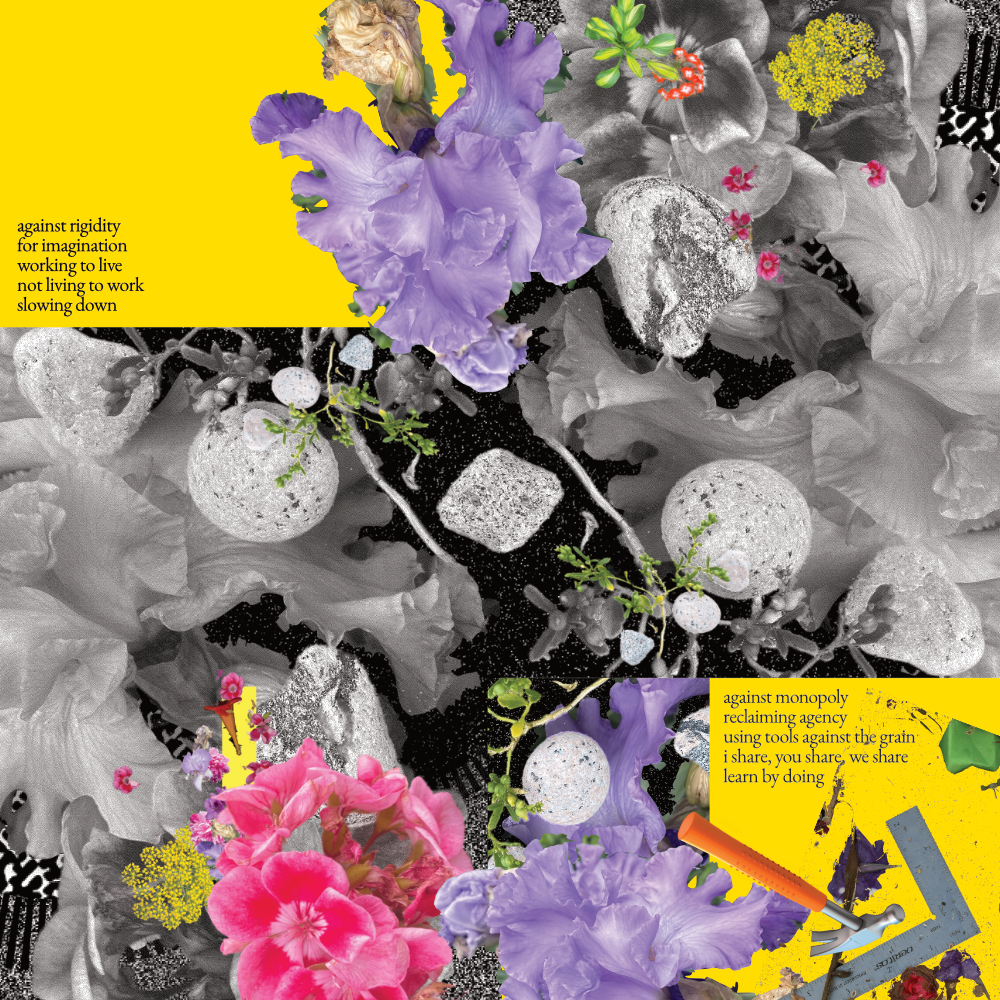
Over the past two years of my studies, I ask five main questions:
- CREATIVE RENT: Through perceived improvement and perpetual subscriptions, are we relinquishing agency (access, choice, and ownership) over our own ability to control what happens to us and to the creative work itself?
- POWER: How does the way in which tech is introduced and used coincide with political economy, monopoly, and power?
- DIGITAL ILLUSION: How does digitized automation hide real human labour?
- IDEOLOGY: As students, teachers, and designers: how does the digitization of tools affect our agency? What have been the common justifications used for perceived innovation?
- AGENCY: How can agency be reclaimed with delicate urgency?
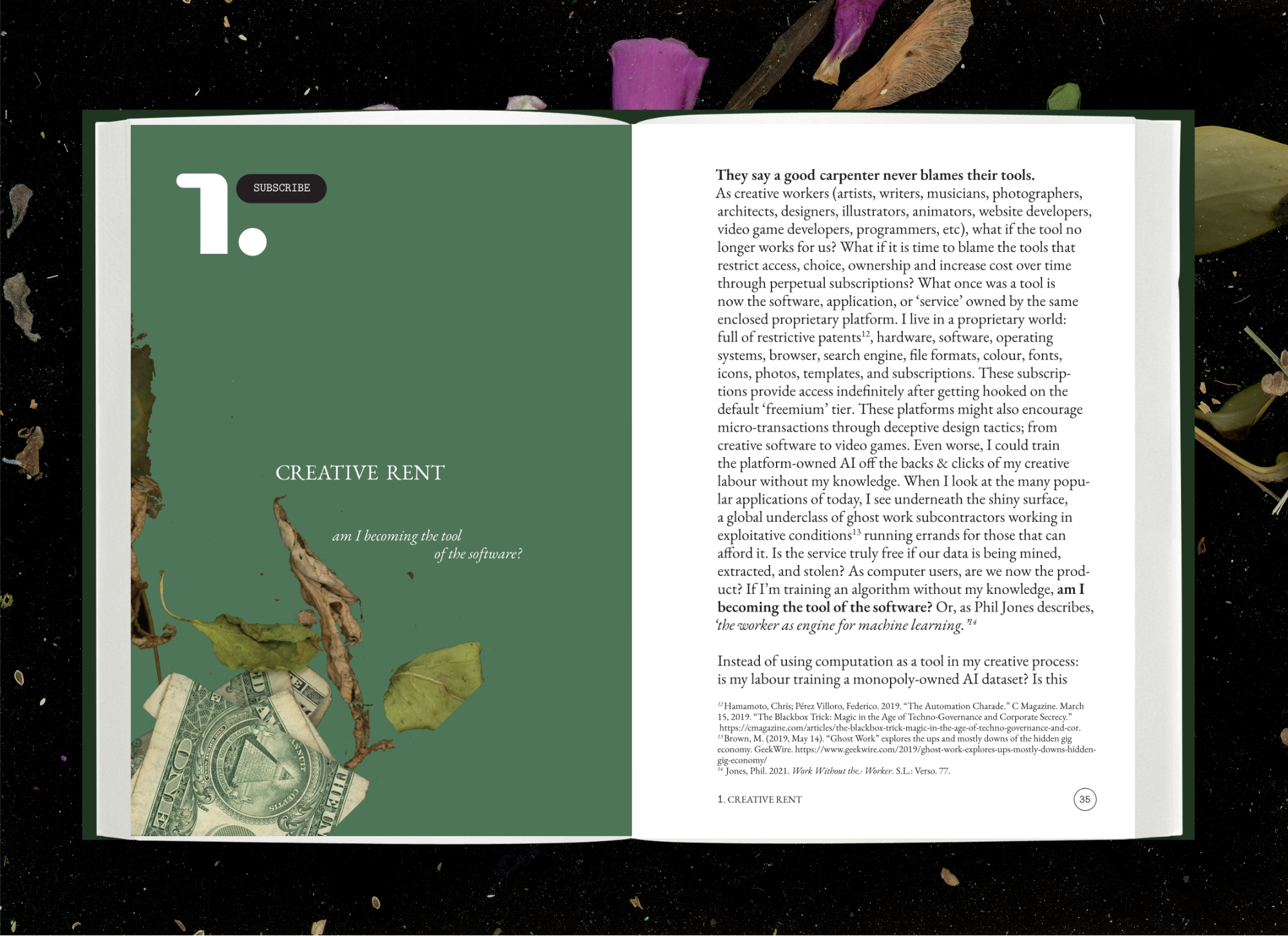
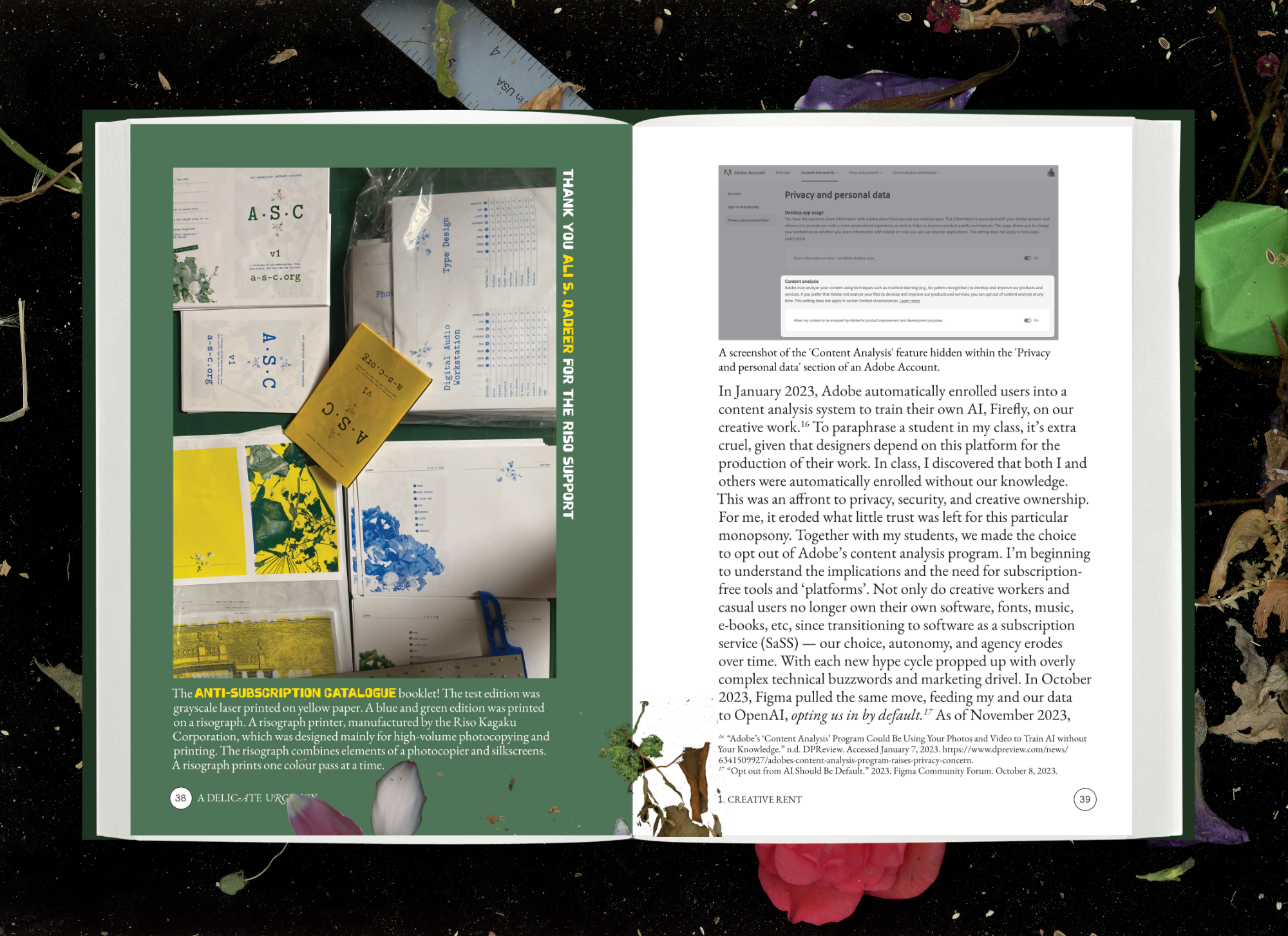
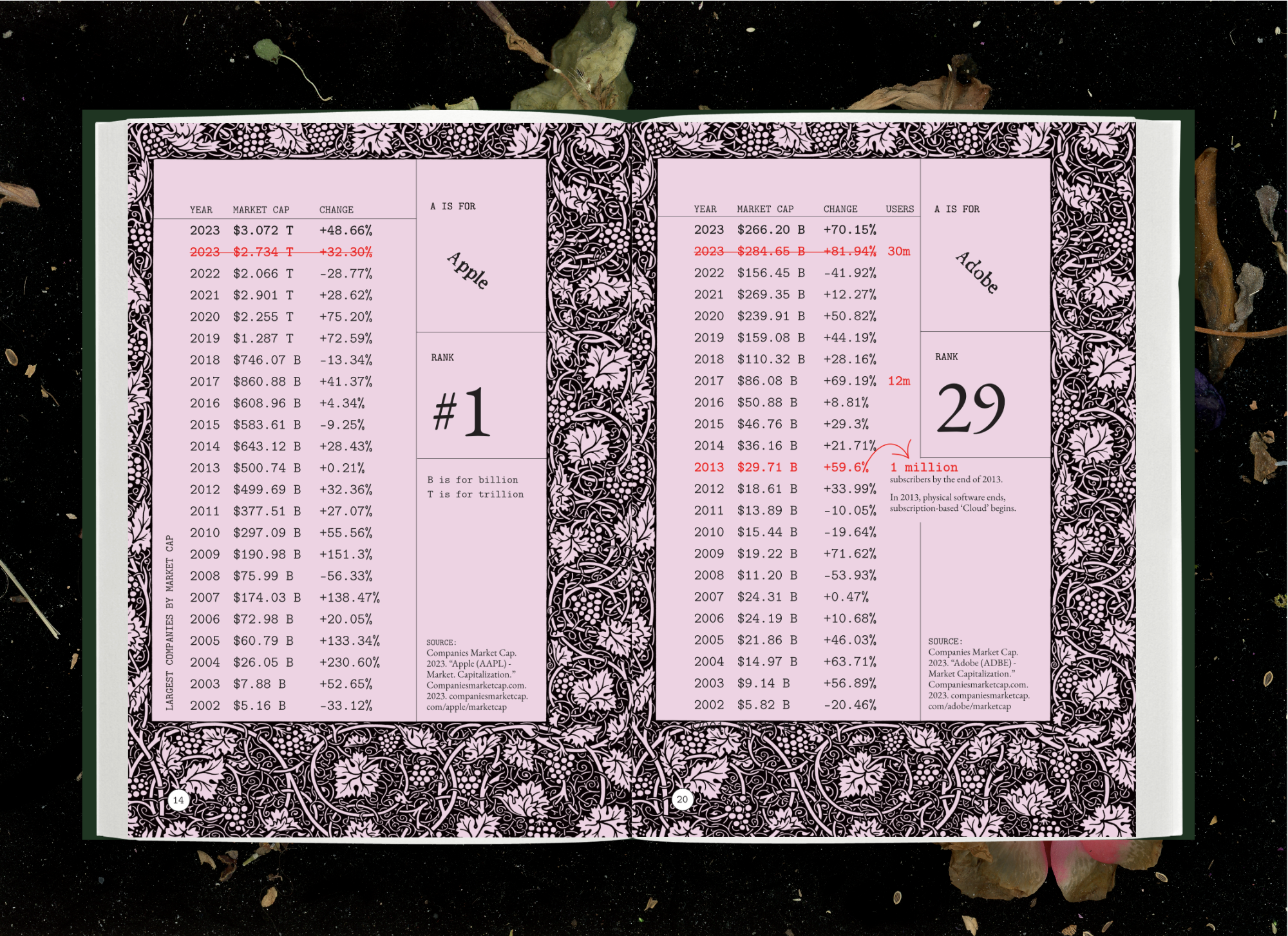
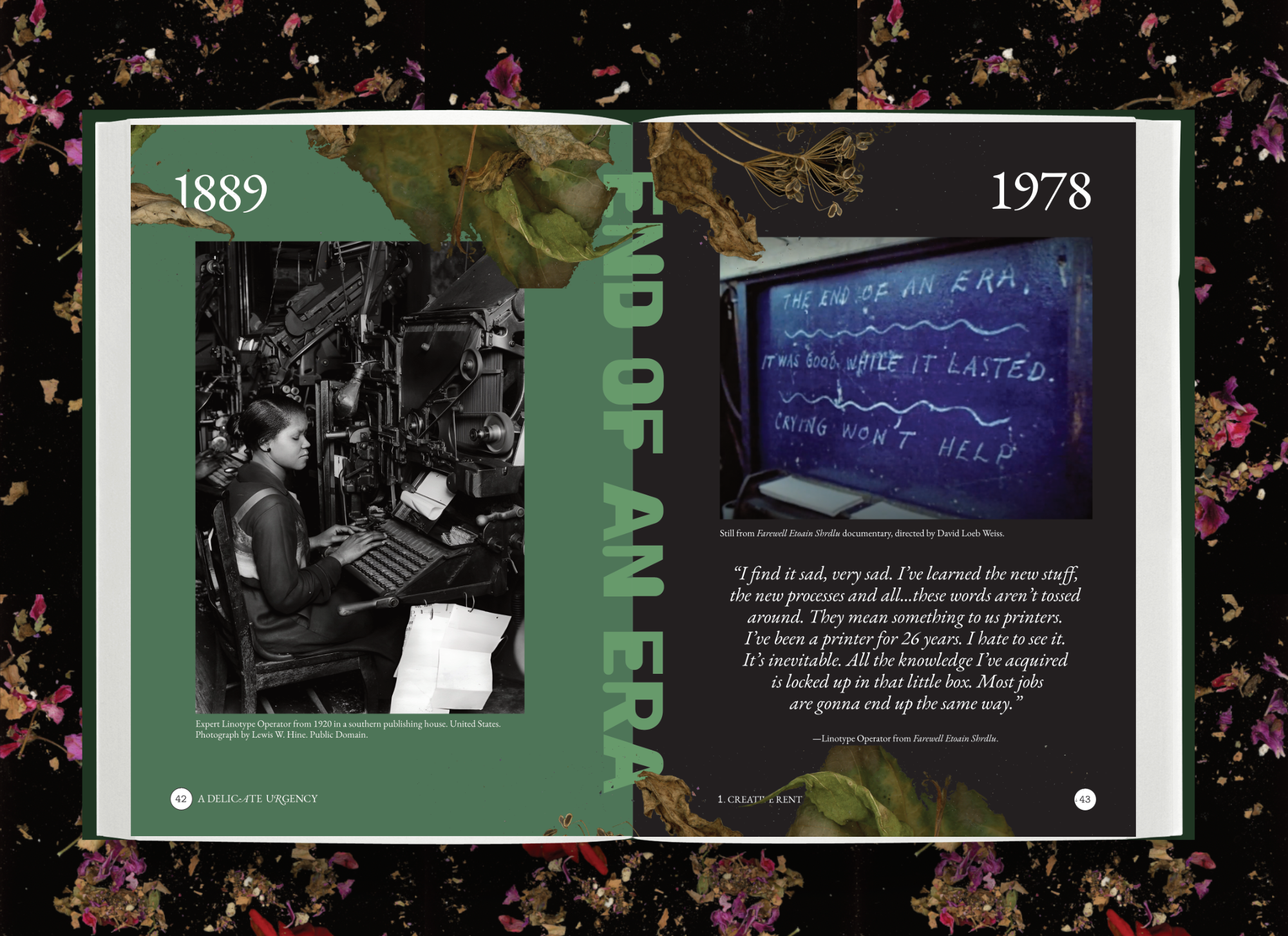
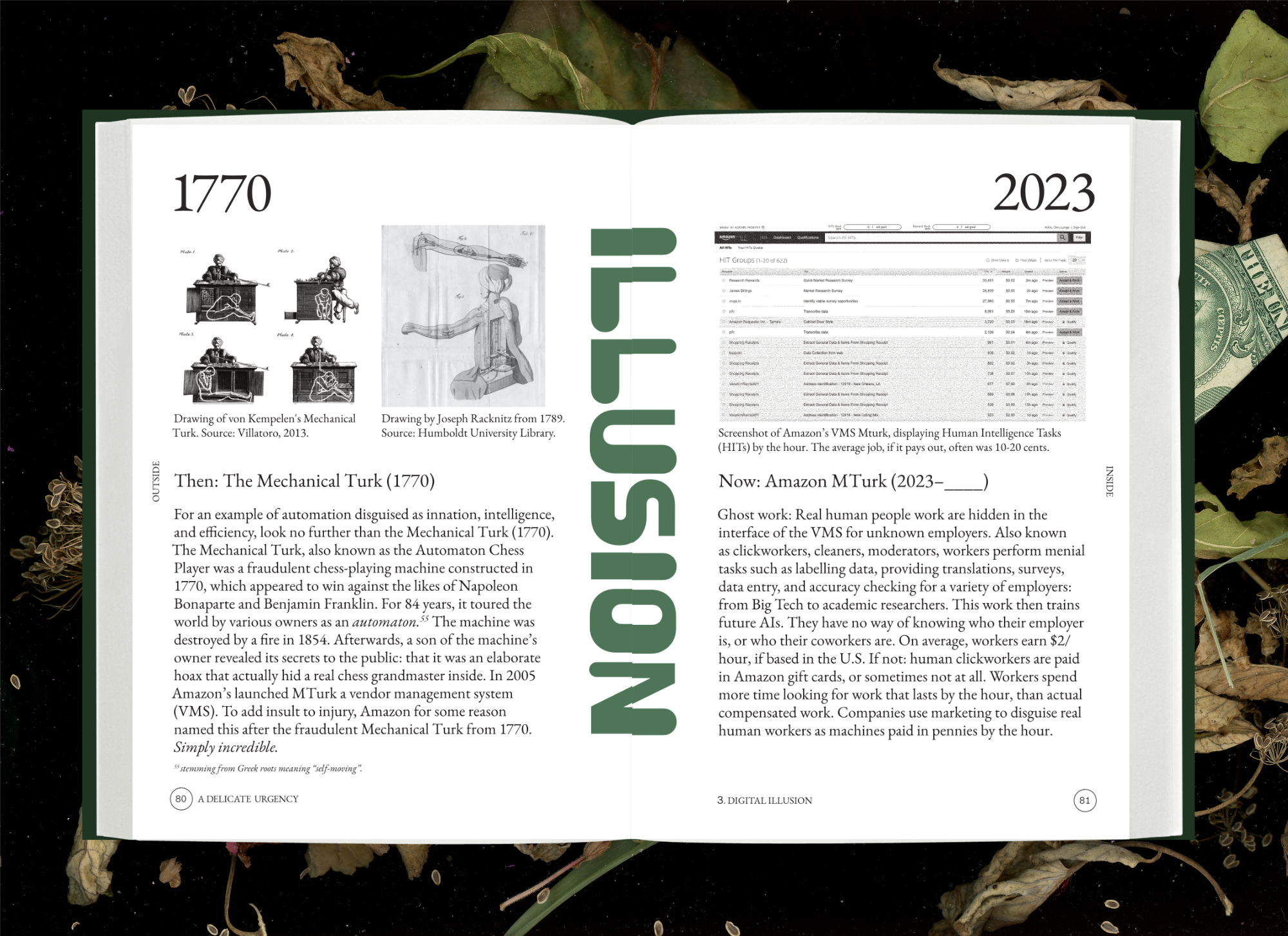
It feels as if a digital tide has turned: what once felt liberating, useful, and delightful has filled the World Wide Web with regurgitated content-milled junk, tiered access, increased rent, degraded reach, devalued wages, divided labour, layoffs, and eroded working conditions. Big tech digital platforms have made it harder to survive as an independent, while simultaneously have trained their own machine learning with our labour (data). This body of work studied the economic and political power structure behind the growth of monopsonies (powerful buyers) and monopolies (powerful sellers). This has led to the realization that individual agency depends upon independent and community ownership models.
I dug into past economics that have coincided with technology to shape our current conditions — starting from the enclosures of the commons in the 17th century. I researched quantitative and qualitative data from primary sources in the form of archives, diagrams, charts, statistics, books, pamphlets, folk poems, manuals, television, film, and songs. I asked my community of students, colleagues, friends, and creative workers — how they have been affected by digital enclosures. In order to understand how past economics have coincided with technology to shape our current inequitable conditions, I studied up (Laura Nader), specifically how rent is charged by power, to what Shoshana Zuboff defines as a digital feudalism in 2023.
If I’m training an algorithm without my knowledge, am I becoming the tool of the software, instead of the tool working for me?
After digging through enclosures as a form of rent, I questioned how digital illusions have been propped up by an ideology of perceived digital efficiency with ‘artificial intelligence’. Does a reliance on these seemingly innovative technologies erode expertise and agency after an initial peak of efficiency? I ask, as computer users, have we become the product? If I’m training an algorithm without my knowledge, am I becoming the tool of the software, instead of the tool working for me? Why is it that our agency, expertise, and access erodes the more our tools get digitized, automated, efficient, and seemingly intelligent? And if so, how can agency be reclaimed with delicate urgency?
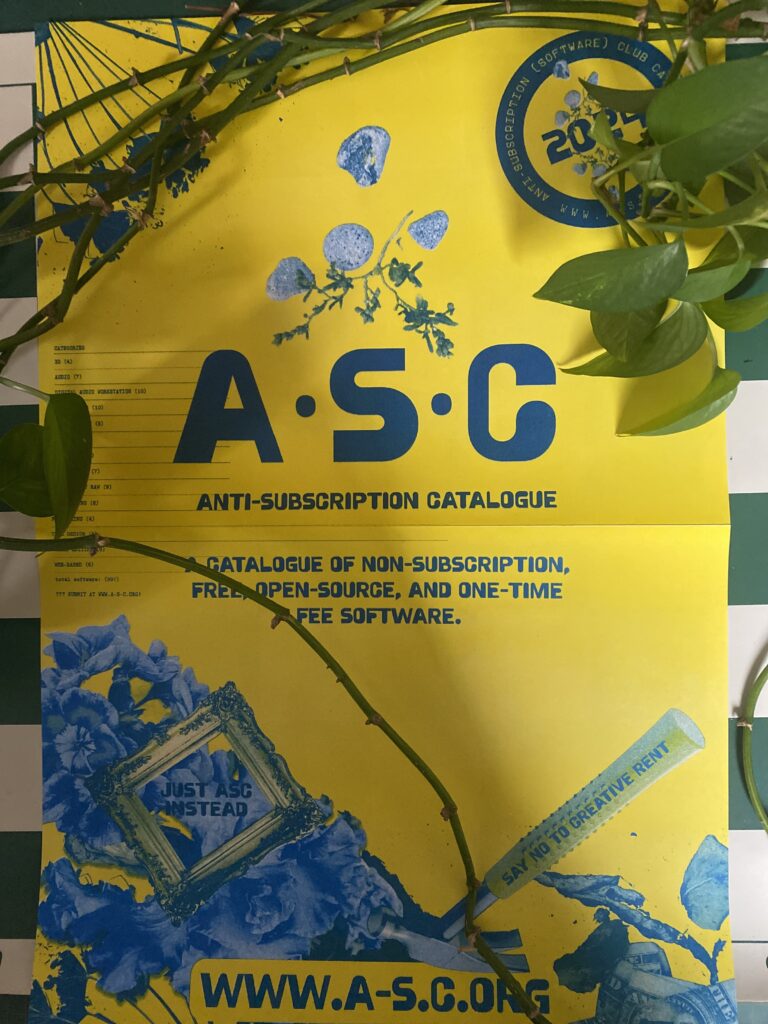
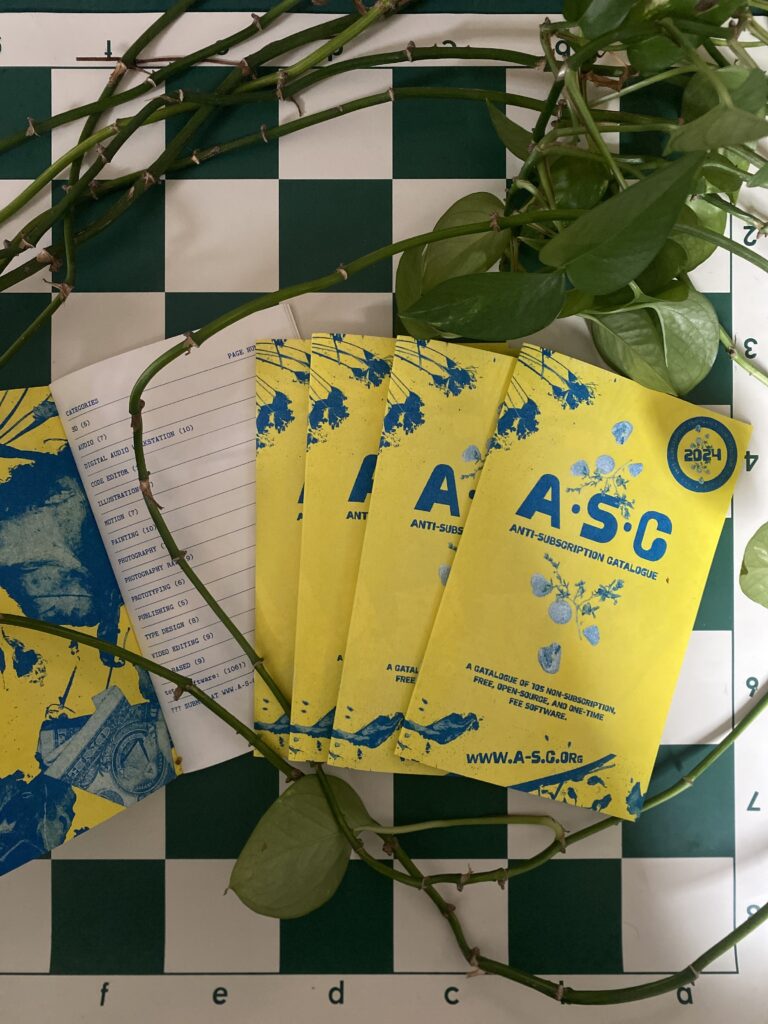

Every month, I facilitate community-publishing workshops centered around a website I designed, coded, and launched called the Anti-Subscription Catalogue (www.a-s-c.org). Built on the work of fellow contributors, the A·S·C project advocates for equitable public access to digital tools through open-source, co-operative, and collective ownership models — displaying an archive of software that is free, open-source, and a one-time fee—instead of subscription-based. From educational access to digital literacy, A·S·C seeks to grow locally, and globally at libraries in the form of workshops that promote a diversity of tools, software, archives, and approaches. Providing choice when it might appear there are less has been a constant theme throughout this work. And this is not solely my work. I maintain it! The ownership lies with the community of contributors to the A·S·C project, hosted on an open source web hosting server, coded in basic open languages, and designed + coded using independently-owned tools. The booklets and posters are printed using a risograph at local and independent Colour Code.
I am a graphic/web designer, teacher, and artist focused on community engagement in Toronto, Canada. I have over 10 years of design experience working with local, provincial, national, and global organizations. I have over 5 years teaching graphic design, typography, web design, interaction design, user interface/user experience, intro to coding, and all-the-latest-buzzwords at OCAD University, and George Brown College.
CREDITS:
Advisor: Natalia Ilyin
Reader: Ramon Tejada
Semester 1: Silas Munro
Semester 2: Ramon Tejada
Semester 3: Ian Lynam
Editor: Brittany Lucas
Type: Canister by Jonathon Yule
Printer: Colour Code Toronto
Say no to creative rent! Just A·S·C instead.






